A fan’s subjective perspective on the early stages and evolution of traditional animation. Mostly an extensive list of cartoons and films that stand out in my eyes, all in neat chronological/geographical order. You’re welcome. Today: a special post about Pinocchio, Disney’s second animated film.
…and possibly my favorite Disney film. There’s a dark quality to it and I relate to the hardworking lower-class morals. Although too preachy to some, I’ll allow it for being a product of its time. It has magical elements, but is very down-to-earth. The protagonist is naïve, makes constant mistakes and has to put in an incredible amount work and suffering to achieve his goal.
Sure you can, drunky.
Now considered one of the greatest animated films ever made, Pinocchio was a box office disaster at release. Apparently some World War was going on overseas. Just their luck. European and Asian markets were cut off and any films Disney released over the next couple of years would not be able to be reach any kind of international success level. Slowly Disney made nearly all their money back on the film by the end of the 40’s. But you know how it goes. Your rent is due when your rent is due.
The animators went to great lengths to improve the level of animation. Clay models and real actors were filmed and the footage was used to guide the animation by studying human movements and incorporating poses. Maquettes and miniatures sets were built, filmed and xeroxed. But one of Pinocchio’s biggest accomplishments in the visual department has to be the effects animation. Sandy Strother spent a year working on water effects alone, splashes, waves, bubbles, the depth when under water,…
Abstract animator Oskar Fischinger, who would work on Fantasia, contributed to the Fairy’s wand effects.
Insane cgi!
Pinocchio beats Snow White in many respects, most notably in craftsmanship in art and animation and in the variety of photographic effects. The main characters are much more relatable and have effective caricaturized movements and mannerisms, whereas Snow White’s main characters were mainly rotoscoped, shallow and didn’t always visually fit in with their surroundings.
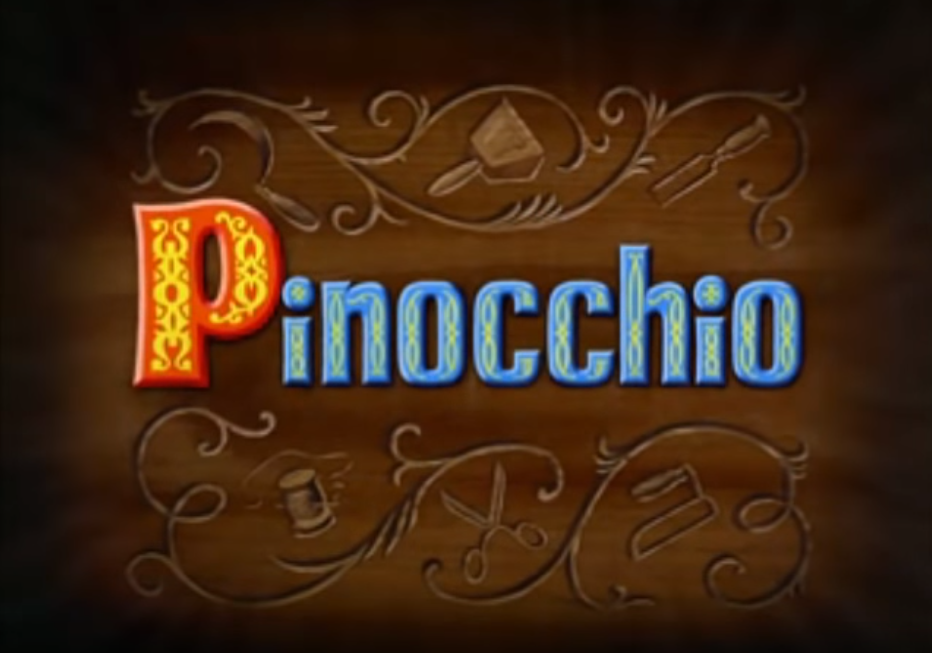
Enough with the words, here’s some videos:
Theme song that became the general Disney theme song.
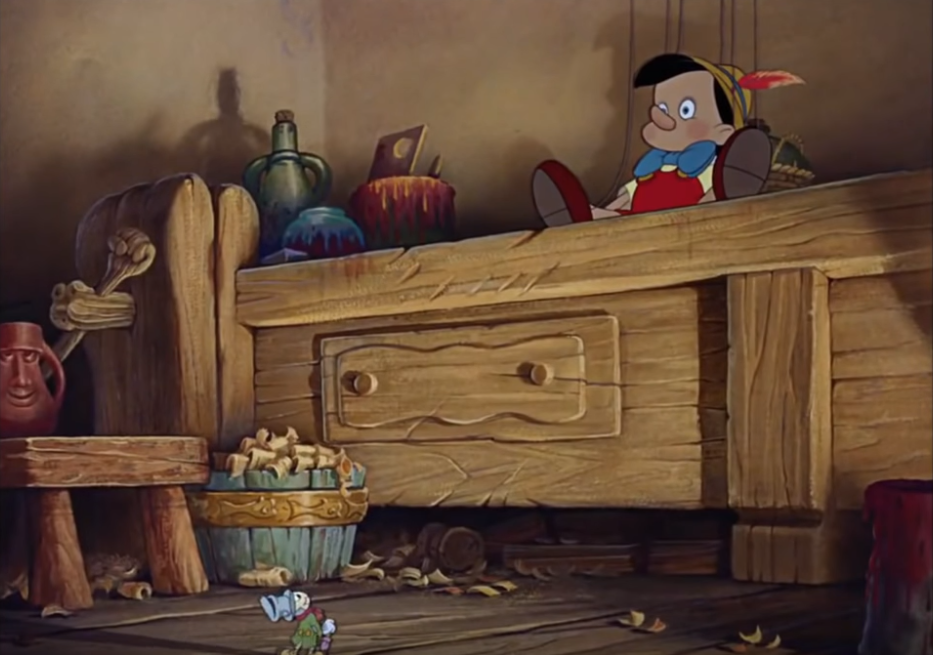
Immediately the ambition is clear. Just look at the effort they made to draw wood. It looks more like wood than actual wood. And look at the bloody jars! And the spinning key at 2:30! I always feel like you can tell by the level of detail in the backgrounds, how badly the animators want the film to be good. Seriously, just in this clip alone, Disney Studios has easily surpassed anything they have ever done in terms of visual perfection. The animation on Gepetto and Figaro is just perfect, not to mention the work on Pinocchio moving with wires, before he comes to life.
I love the clocks when Jiminy shoots. Could be among the best Silly Symphonies.
Pinocchio and Stromboli – here and here
Magic effects. Oskar Fischinger at work.
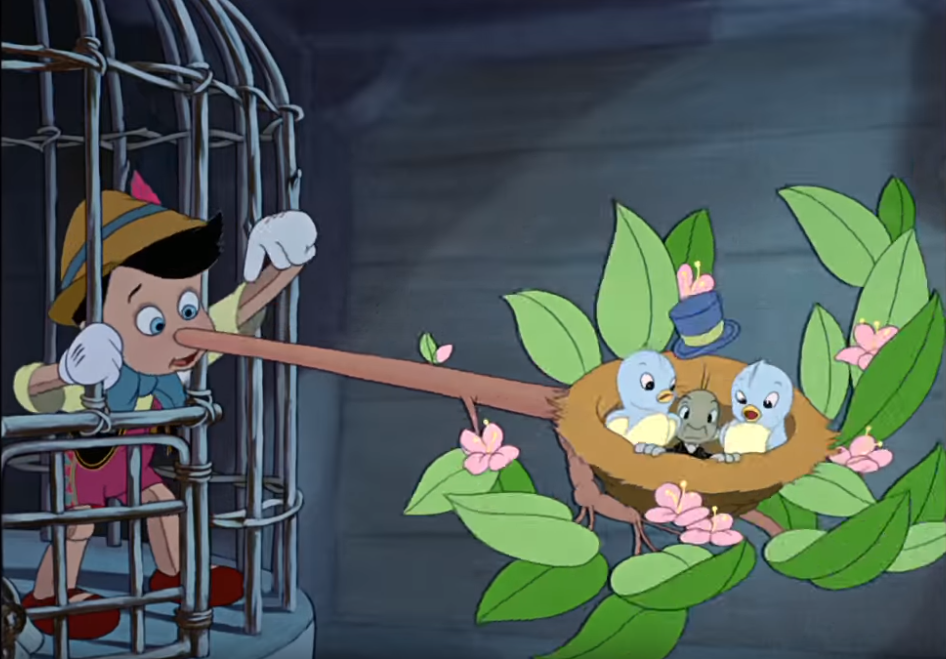
See what happens when you lie? Your cricket has a threesome in your nose tree nest.
So many amazing shots and camera moves giving you a sense of scope.
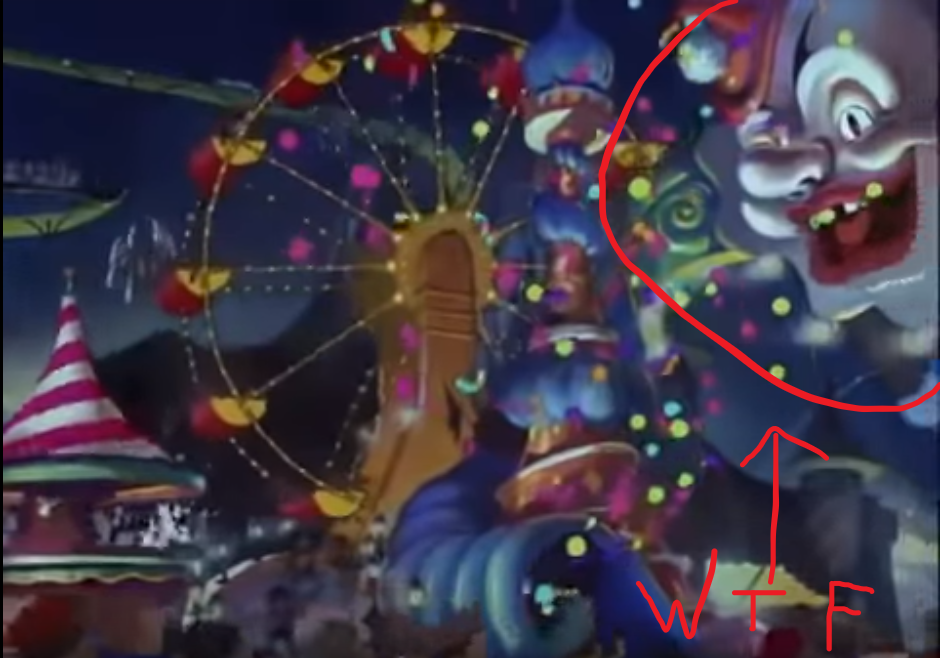
What could possibly go wrong??
Pinocchio’s gets drunk and smokes, Lampwick’s transformation
Pinocchio gets wasted. The kids turned into donkeys gave me nightmares.
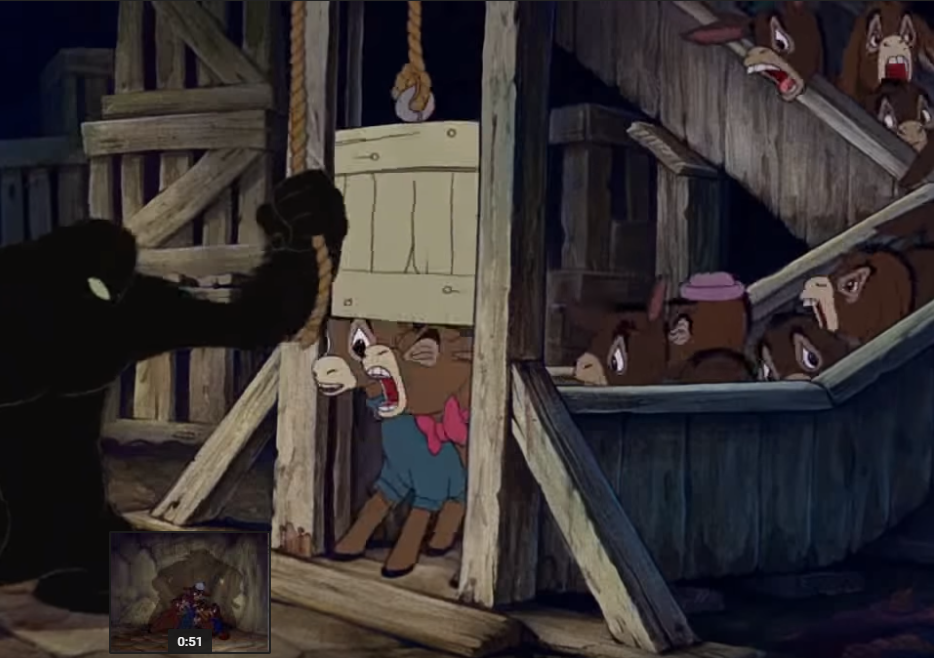
Oh, great, I almost forgot about the friggin’ SHADOW GORILLA!
Search and escape from Monstro
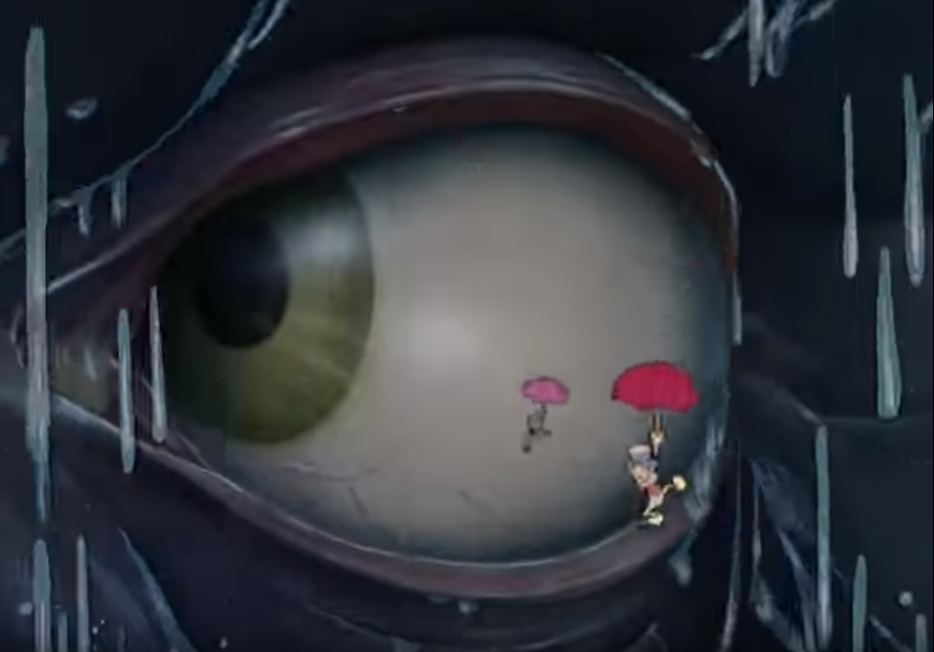
This is the shining scene for the animation department. The whale is incredible. He almost looks sculpted. You can actually feel how heavy he is, the moment when he jumps into the air. There’s the awesome close up of the whale’s eye at 2:02. All the water effects from ranging from hyperrealistic to impressionistic…
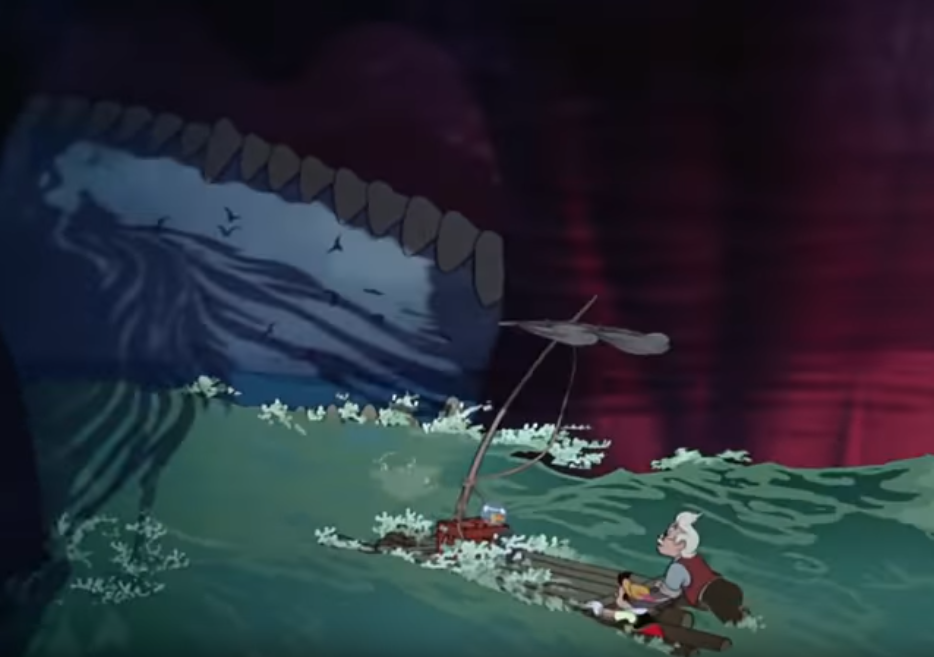
The smoke. The camera swaying back and forth. The whale breathing in and out. Disney has experimented before with characters being on the inside of a giant beast. It’s like they were preparing for this one.
I’ve been struggling to explain why I’m such a fan of Pinocchio. I’ll try and be a bit bolder than at the start of this topic. I read that Pinocchio is felt by many film historians to be the most technically perfect out of all the Disney animated features. And that’s exactly what I’ve been thinking, but afraid to say out loud. I’ve rewatched almost every Disney movie of the 20th century in chronological order. Dumbo and Bambi suffered from reduced budget because of Pinocchio’s box office failure. Sleeping Beauty had mind blowing art work but the backgrounds stole the spotlight. And after Walt Disney passed away, they made movies like Jungle Book or the Aristocats, which were fun and resonated with audiences, but visually, they were clearly missing a tyrant that wasn’t content with anything but near perfection and kept pushing his staff to their limits. But Pinocchio, they gave everything they had, believing they couldn’t fail, after the smashing success of Snow White. And only the best was acceptable. 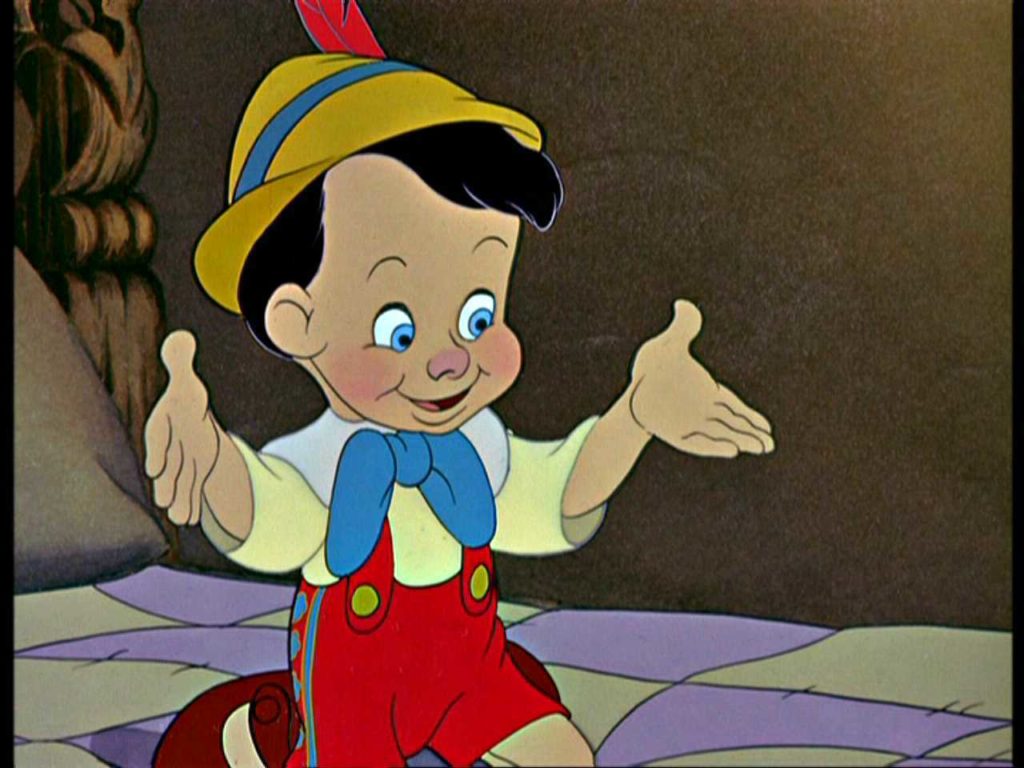 For example, they were already partway into the making of the film when Walt Disney halted animation because Pinocchio was too wooden and lifeless for the audience to relate to. He pushed his artists until they came up with a design where Pinocchio was basically just a cute boy and the only wooden and mechanical parts of him were his joints and nose.
For example, they were already partway into the making of the film when Walt Disney halted animation because Pinocchio was too wooden and lifeless for the audience to relate to. He pushed his artists until they came up with a design where Pinocchio was basically just a cute boy and the only wooden and mechanical parts of him were his joints and nose.
The Making Of-documentary begins with the statement that all the great artists happened to have been together at the right time under a great leader, that it was a once in a lifetime opportunity to make one of the best films ever. And ever since Pinocchio I’ve been waiting for anything by Disney to reach the same level of artistry. And for a movie from 1940, that’s saying a lot. Golden Age of Animation indeed.
Done for today.
Previous posts:
Early Stage of Animation: 1920-1938 – The Rise of Cartoons
Disney’s Snow White and the Seven Dwarves (1937) – Golden Age of Animation
Next up: Fantasia !
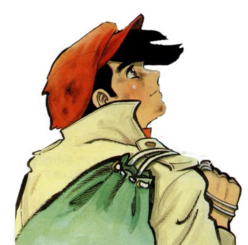
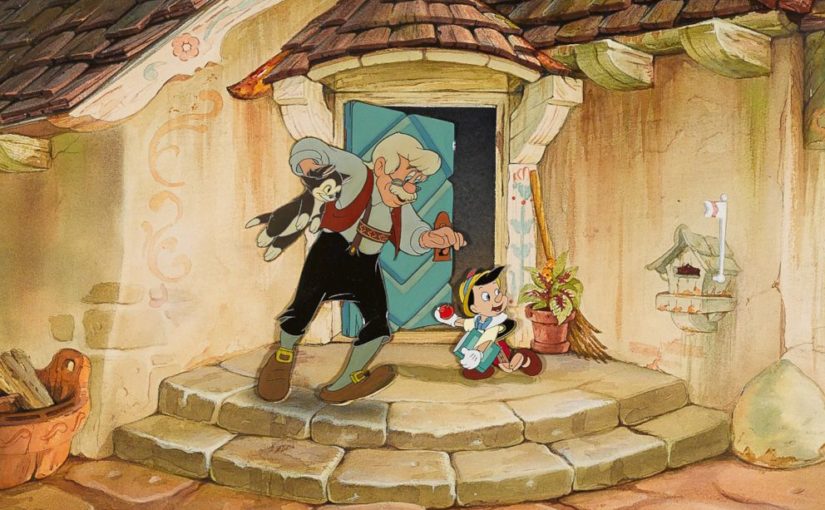
Thanks for the article.
Just re-discovered Pinocchio clips now and am amazed how good the animation looks … like they didn’t double up the frames and use 15’s or something. Started searching for reasons and found your article.
Re-discovering Beauty/Beast and Aladdin … they look ghetto basically. Pinocchio looks aged (of course), but the animation quality is excellent!
Good read.
Bless.
Agreed! And thanks for the comment 🙂